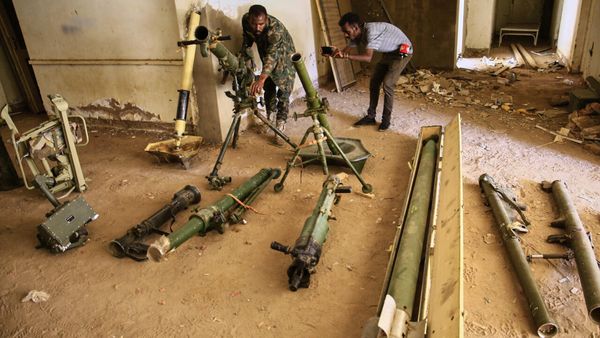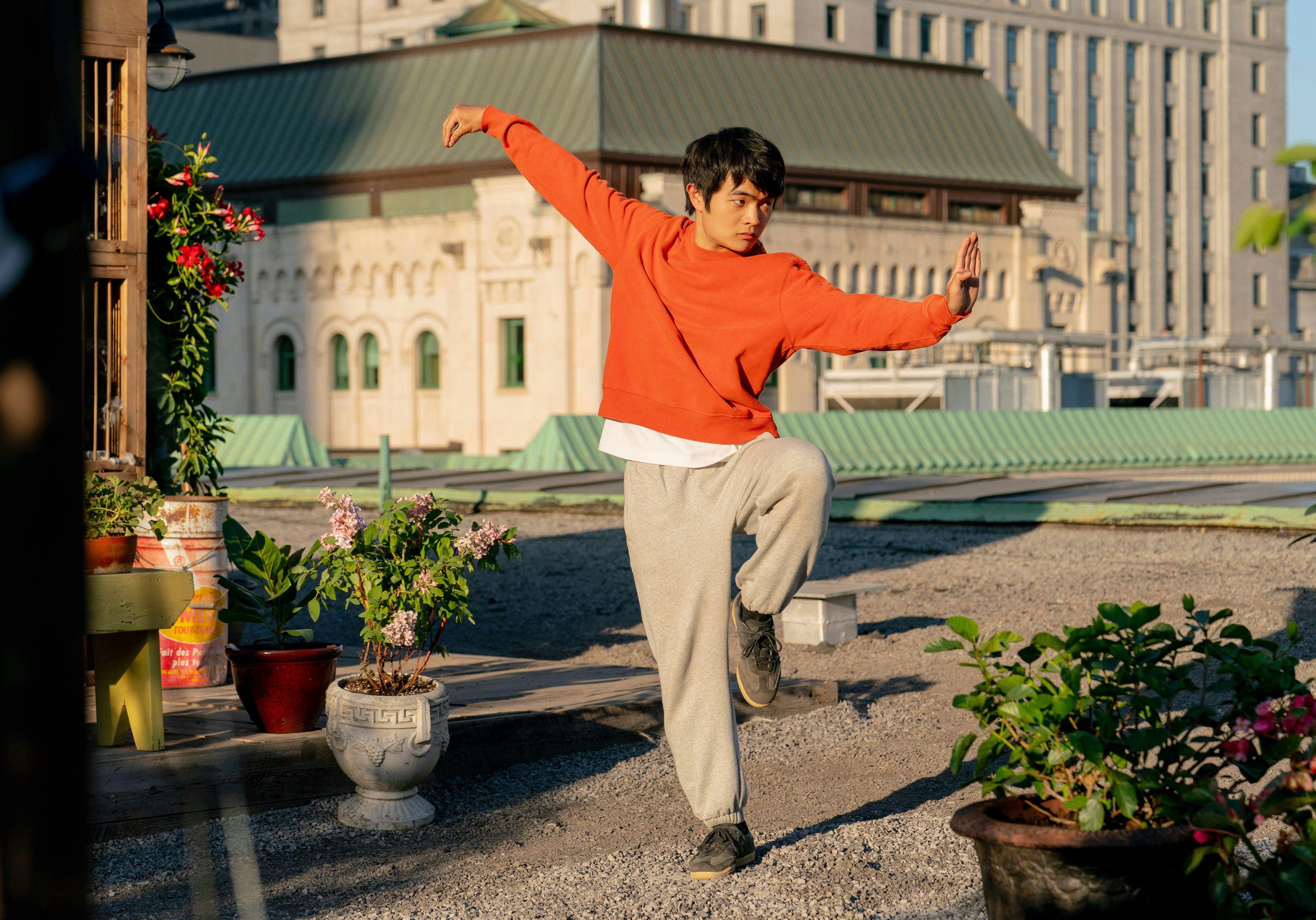
Like everyone, Jonathan Entwistle grew up watching the Karate Kid movies. “Everybody over the age of 30 knows Mr. Miyagi, wax on, wax off,” the director of the new Karate Kid: Legends tells Inverse.
But turning something you absorbed via cultural osmosis into a successful new sequel movie is another story. That was the challenge that Entwistle, best known as the creator of acclaimed TV shows like The End of the F***ing World and I Am Not Okay With This, had to navigate when he was tasked with directing Karate Kid: Legends. The sixth film in the long-running martial arts franchise, Karate Kid: Legends is a soft reboot of sorts: It introduces new protagonist Li Fong (Ben Wang) and brings together original franchise star Ralph Macchio as Daniel LaRusso and 2010 Karate Kid star Jackie Chan as Mr. Han. But Entwistle was game to take his jacket off, roll up his proverbial sleeves, and deliver a Karate Kid for a new generation.
“Each piece, each chapter of Karate Kid in its many iterations, has always had an element of mentorship.”
“It definitively was a challenge, because what I didn’t want to do is break the mold of a base-level expectation of what a Karate Kid movie is, but I still wanted to create a contemporary theatrical motion picture,” Entwistle says. “I think within that, I was trying to find a way that we could have our cake and eat it. We could enjoy Daniel, we could enjoy Jackie, and we could enjoy everything that those characters bring in and of themselves, folded into this thing that already existed.”
For Entwistle, the key to pulling that off was finding the essence of a Karate Kid movie: “I think it’s about mentorship,” Entwistle says. “Mentorship is a really important element of the story. Each piece, each chapter of Karate Kid in its many iterations, has always had an element of mentorship.”
Inverse spoke with Entwistle about how Karate Kid: Legends flips the mentorship narrative, how it grows the franchise’s martial arts legacy, and why it all traces back to Mr. Miyagi.
This interview has been edited for clarity and brevity.
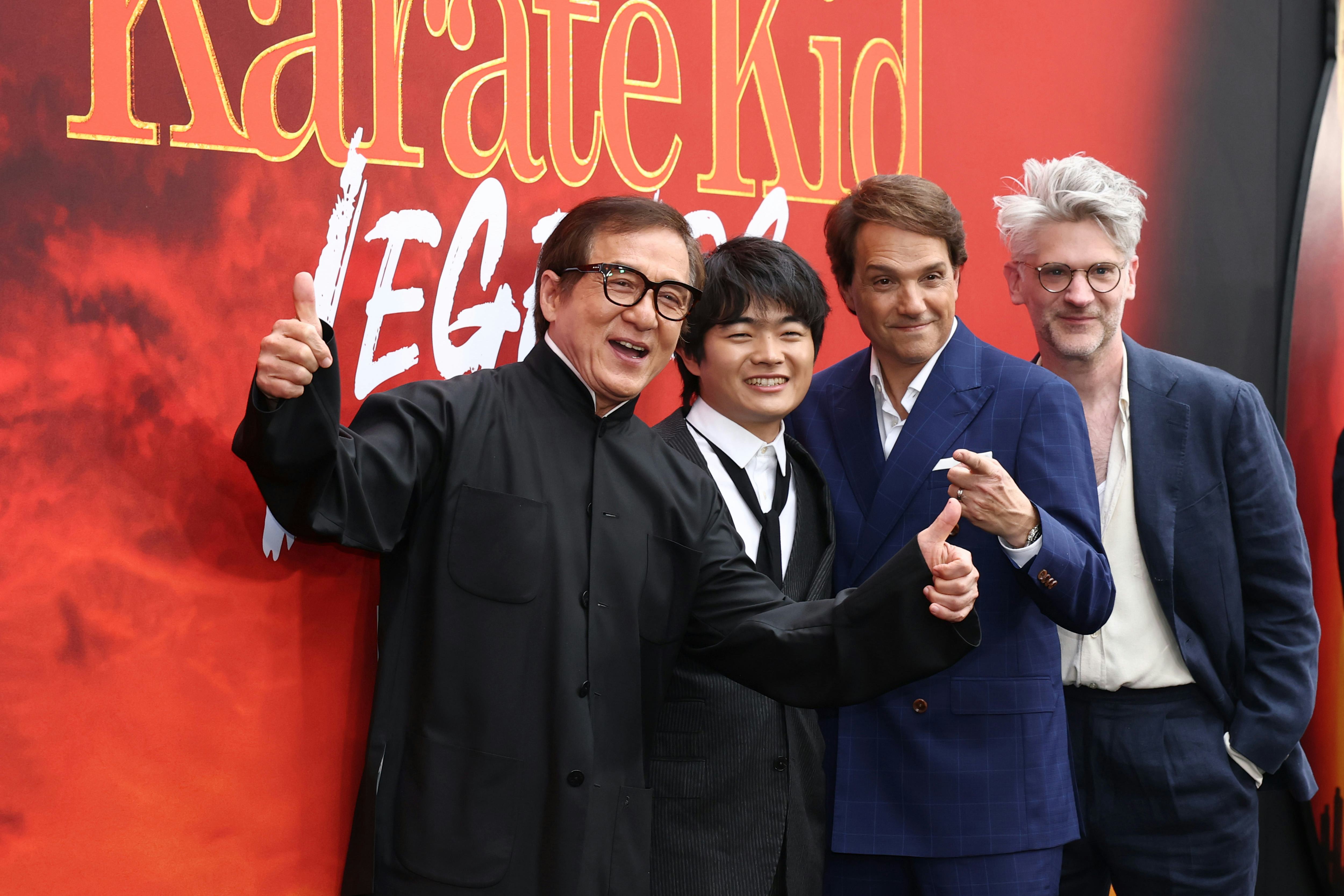
You’re no stranger to the coming-of-age/adolescence story. Was there anything that you brought from your time on End of the F***ing World and I Am Not Okay With This that helped you make Karate Kid: Legends?
I had a really great passport to the whole coming-of-age thing, and I think what’s really important for this movie is that it’s about a kid who’s coming from China to New York, but it’s actually mostly about finding family. I think that was a new piece for me, actually. A lot of my things are about the angst of trying to get away, and this one is a little bit different. He doesn’t want to leave. He’s forced to go away, and then he finds these new people, and then he fights for that. I actually think that the idea of fighting for found family was the first time I’ve been able to put some action to the world of growing up.
Karate Kid: Legends has a difficult job of bringing together the original Karate Kid movies with Ralph Macchio and then the Jackie Chan soft reboot from 2010. What was the biggest challenge of bringing these movies and their legendary stars together into a cohesive story?
For me, I was very excited that there was already a menu. There was already a recipe in there for what this could be, the heart, the mentorship, the found family, all of these types of things are in there. Li Fong as the mentor for Victor, and then Jackie and Mr. Han and Daniel LaRusso being the mentor again for Li, and Miyagi being everybody’s mentor within all of these pieces.
Then I was just like, “Well, what if Jackie Chan fights with Ralph Macchio on a rooftop in New York?” I was like, “That’s also awesome too.” That’s when we started to fold in the visual pieces of it. It’s not really cynical to want to see Jackie Chan doing awesome martial arts on a rooftop. I’m like, “Yes, this is what I want to see when this movie goes out.” I was very excited about that too. What does Jackie bring to the martial arts piece of this movie? What is the visual aspects of seeing that? Very, very exciting.

Speaking of Jackie Chan, I feel like there are no words to really describe how much of an action movie legend he is. What was it like getting to direct him?
I mean, it was magical. That’s a word I would use to describe working with Jackie, from his fight coordination to his ability to find a little thread of humor in every little prop that’s around. It was just fantastic watching him work like that, watching him think about where the camera is and think about the audience, what do they want to see, why you punch this way and not this way. All of these things were so, so crucial to the joy of a lot of the action sequences in the movie.
Even though Mr. Han is behind the telephone [for a lot of the scenes] of him in China, Jackie is in the alchemy of all the fight sequences in the movie. He’s very much involved in all of that. Indeed, he arrived on set when we were shooting the alleyway fight with Ben. That was the very first time he arrived on set, and he walks on and he’d been involved in the choreo, and he was like, “OK, no, you do this. We pull this this way, do all of this.” It was just like, “Oh, now we’re cooking. This is how it works.”
It was just incredible to see that command and control of something that actually I think was very important to me, was that the fight sequences felt real and fun and big, so that they felt like, when you’re in the movie theater, “Whoa, this is not what we’re used to seeing in the recent iterations of the fights for this franchise.”
“It was really exciting to shoot another type of fighting within a martial arts approach.”
This is your first action/fight-heavy project. Going into it, were you anxious about having to take on something that was a movie that was going to be so much about the action and the fighting? Even though I was revisiting some of the old Karate Kid movies, they aren’t nearly quite as fight- and action-forward as our modern-day John Wick or even Jackie Chan movies are. What was it like diving into that, having not really had much experience in that avenue?
For me, it was very interesting. To your point, there’s an earnestness from the very, very beginning of those movies. They’re almost really, really hardcore YA dramas. When it came to this, I was like, “I am a huge musical fan, and I’m a huge anime fan.” To me, I was like, “Well, wait a minute. There’s something really, really close here to how musical songs punctuate movies.” They move the story forwards, they do these little things, so that was my immediate thing. I was like, “OK, here’s how the fights sequence out within the movie.”
Then when talking to Peng Zhang, who is the most exquisite stunt coordinator, fight choreographer, second unit director, incredible, he was able to give me the things I needed to crescendo. Let’s have the fights, do-do-do-do-do to lead to a thing, and then boom-boom-boom-boom-boom, and it had all of those end on a story beat. Li flipping over, the jumping off the thing in the alleyway, the spinning around the light switch to reveal Jackie. Those are all choreographed moments that are part of our approach to elevating what the fights could be.
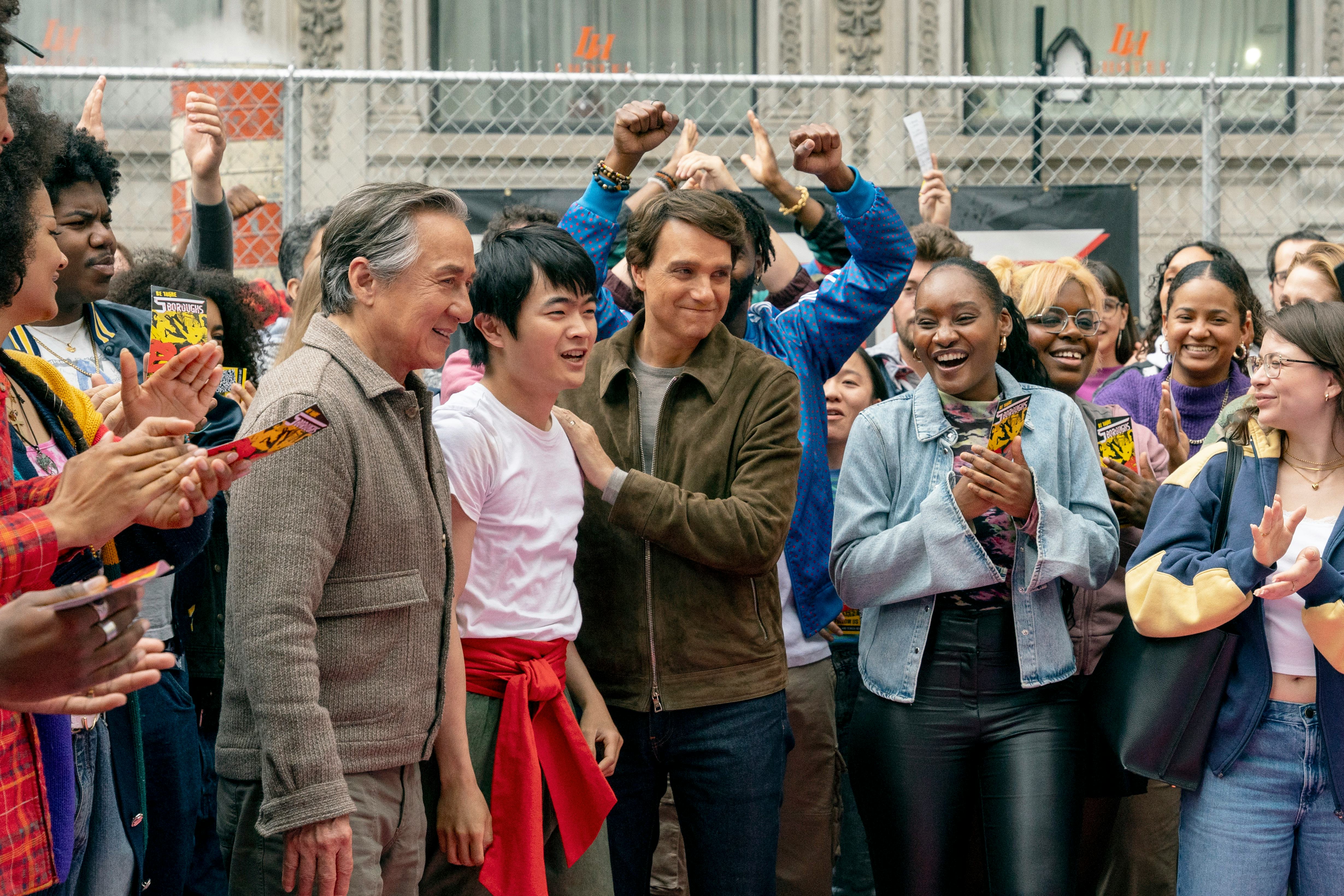
You worked with some classic wire work, typical of Hong Kong action movies. Was that something that Jackie Chan’s team brought in, or is that something that you wanted to do, knowing that Jackie Chan was going to be part of this movie?
It’s a little bit of both. From Day One, I told the studio, “I really want the fights to stand out.” There is martial arts in the title of this movie. Like I said, we’d lived with the story on television with an approach to fights that wasn’t necessarily cinematic. For me, I came in there and I wanted to be like, “How can we elevate the fights to another level?: I was like, “OK, we’re going to do everything in camera.” They were like, “Wait, what? That’s impossible.” I was like, “No, it’s not. Look how they do in the Hong Kong wire-work team.”
In the end, I brought in Peng Zhang and his whole team, and they were all just like, “Yeah, wires. Everyone takes punches to the face. We’re all good.” Peng is so good at his job that when, say, Josh Jackson arrived, he did one session with the stunt team, and he was like, “Yep, just punch me in the face as much as you need.” It’s all in camera. It’s all done. There’s a huge amount of full contact in the movie, which I don’t think you see as much anymore because there’s a lot of camera trickery, VFX augmentation. We didn’t do any of that, and I hope you can feel it. There [are] in fact some true knockouts in the movie, that people have to go and see if they can work out the moments that stunt guys were out.
This movie even squeezes in a boxing subplot, which allows Ben Wang’s Fong to do a sort of reverse Karate Kid and train Joshua Jackson’s character, Victor. Was it refreshing to show this reversal and to bring boxing into this franchise?
Yeah. I mean, it was really exciting to shoot another type of fighting within a martial arts approach. Also, more importantly I think ... and this came from the filming and from the training montage ... we all know everybody loves a training montage, especially in a nostalgic ’80s nod. What was really important is that Li is not teaching Victor a specific kick or a punch or a move. What he’s doing is he’s teaching him to believe in himself, and to pick himself back up. When life knocks you down, get back up. That’s what Li teaches Victor to go back into the ring.
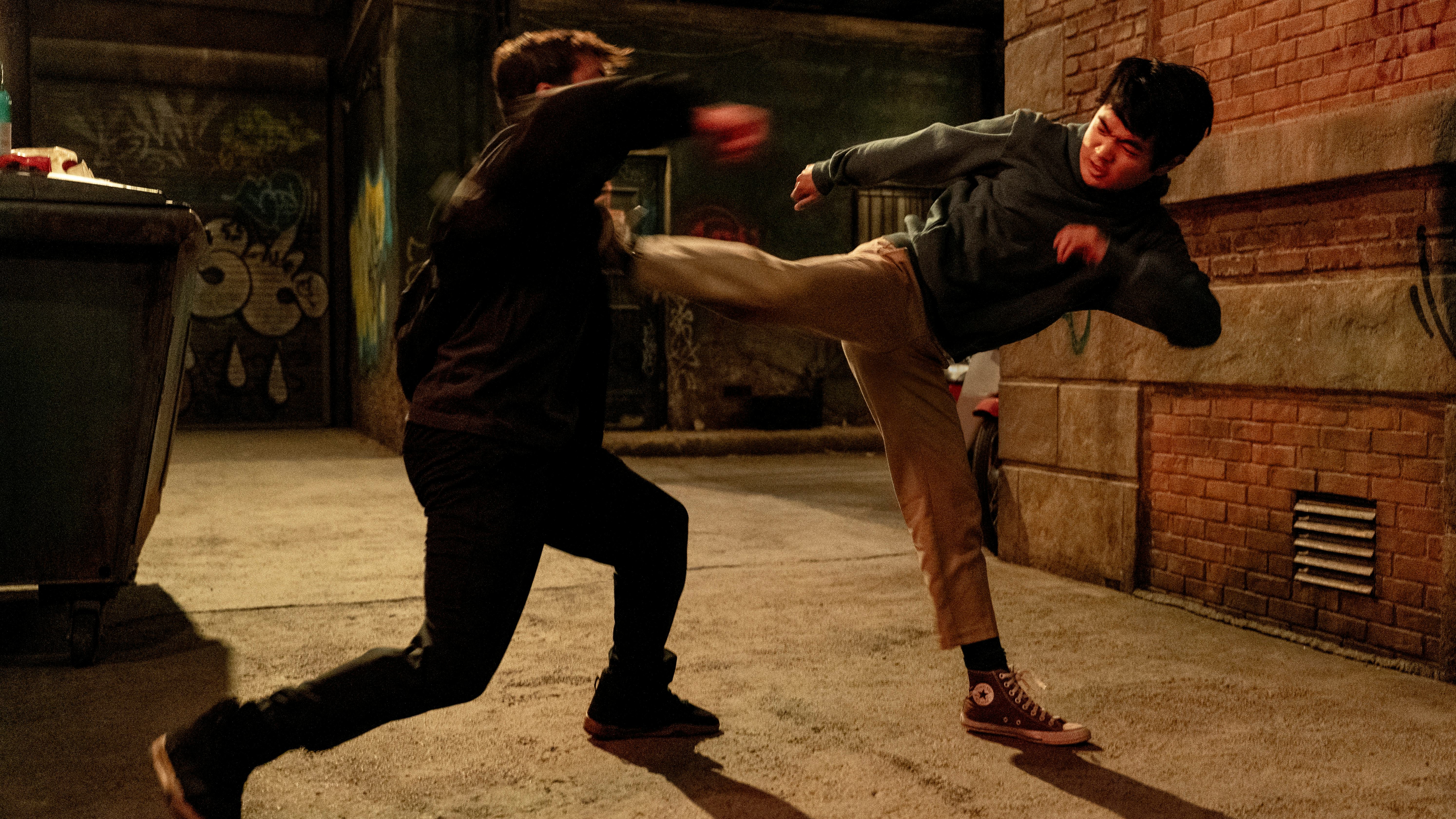
This movie is jam-packed with training montages. What do you think is the most important aspect of a successful training montage?
I think a successful training montage is taking you somewhere. I think it’s buying you the ability to enjoy where you end. I think the boxing montage allows you to be in that ring and feel it and be with them. I think the insane Jackie Chan/Ralph Macchio rooftop training sequence buys you a 12-minute finale with no dialogue, that is all martial arts at sunset.
It’s really important for me to feel especially that buildup to the finale, which is like a “Whoa, get in this.” It’s like we’re on a roller coaster.
When you said that you were inspired by anime, I felt like the climax of this movie with this tournament felt very anime to me. Can you talk about the anime influences that you might’ve brought into this movie?
It’s the energy, and it’s the visuals. I think it’s the slightly heightened approach to the fights, or in some anime cases, the insanely heightened elements to the fights but still with the same stakes. There’s a lot of heart in the way, some of the super imaginative approaches to fight sequences in a lot of anime. I think that one of the things that we had in our toolkit was Jackie, already heightening those things, but it’s also visual. It’s also some of the most creative work is done either in anime television or in manga or in some of the feature films.
“There’s a lot of heart in the way, some of the super imaginative approaches to fight sequences in a lot of anime.”
A huge influence for me is the most magical movie Your Name, and what I really wanted was the sky for the finale to be basically Your Name sky. I was like “Your Name sky everywhere, guys.”
What I wanted for that finale, that is a real New York world, but the sky, I worked on it graphically to really heighten it and to give it that quality in a live action setting. It’s not a super far push, but I think it’s about that. It’s tonal things, that a well-versed younger anime audience can feel.
I wanted to ask about Dre Parker, Jaden Smith’s character from the 2010 Karate Kid. Does he exist? Is he nowhere to be seen?
He does exist. I think he still is. Absolutely, the character is still canon, but he’s no real reference to Li Fong. He’s no real reference to this particular chapter. It’s not to say that he’s not a reference to a chapter of Mr. Han’s story, that’s for sure.
Are we seeing a sequel for Li Fong ahead?
I'm not sure. We’ll wait and see.



